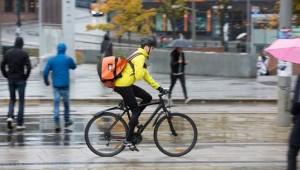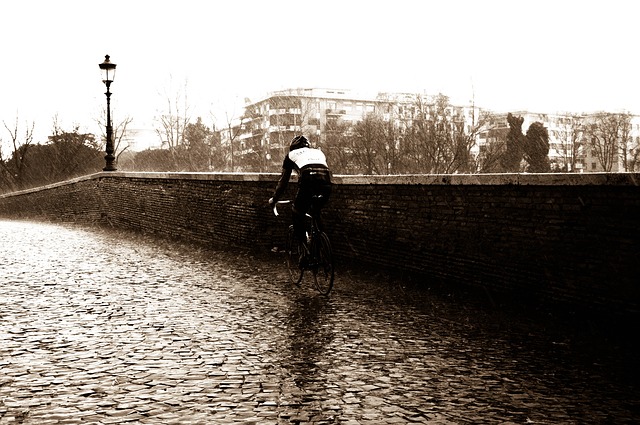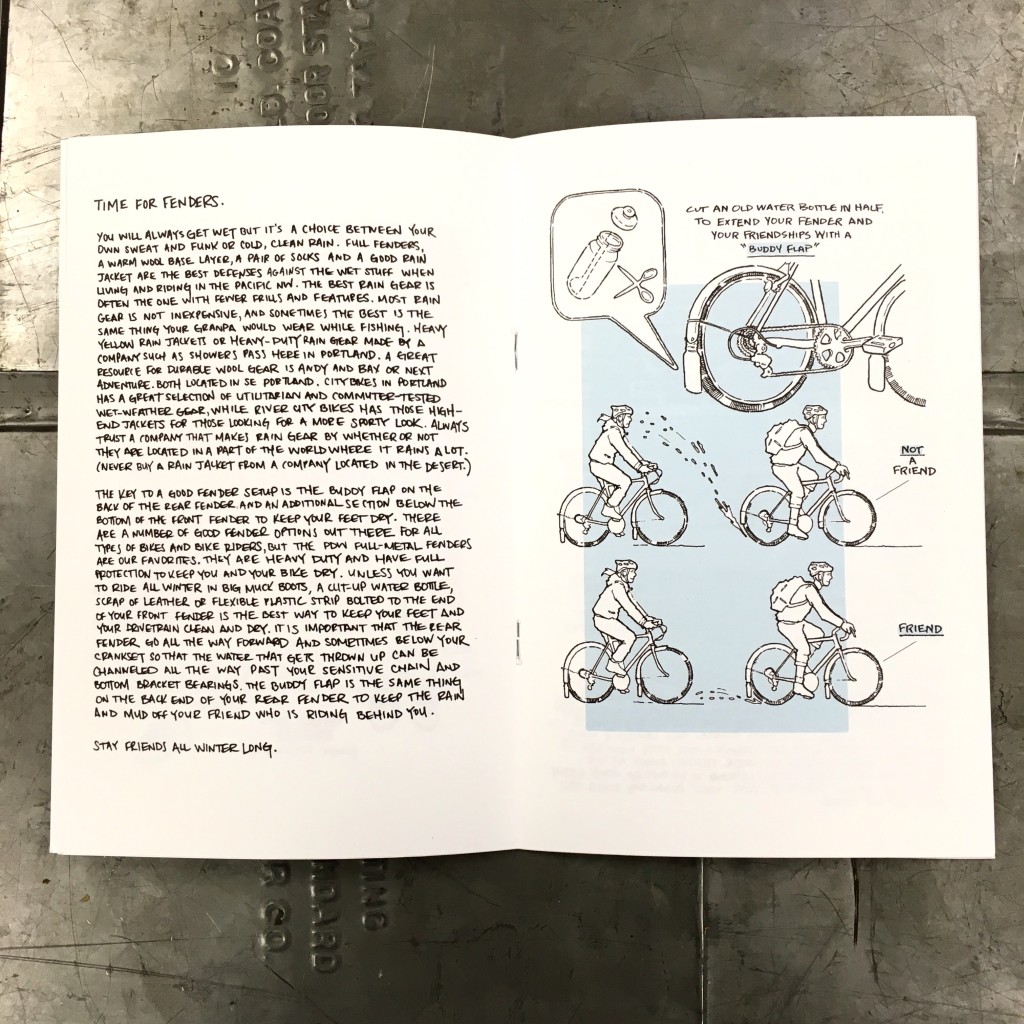For some US cities, winter cycling is simply not an option—the bike lanes are covered in drifted snow, the plows are tearing up the road, black ice is lurking, your visibility is terrible, and cars are swerving everywhere. But if you live somewhere like the Pacific Northwest, winter usually just means rain—a lot of rain. If you want to keep up your commute through the rainy season, it’s probably a lot more accessible (and enjoyable) than you might imagine! In fall and winter, many annual cycling events arise all over the Pacific Northwest to keep your stamina up to par!
It’s Not That Bad

Riding in the Rain, Portland Zine
In fact, biking in the rain can be downright pleasant. The sound of rushing water, the quiet that falls across the city, and the fresh, wet smell of the air are their own reward—not to mention the feeling of pride you’ll have after a grisly ride. Riding in the rain is a rite of passage for cyclists. If you’ve ever slogged through a morning commute during a downpour, you’ve probably gotten at least one reaffirming head nod from a fellow biker passing by. That tip of the hat (or rather, helmet) is an expression of solidarity—“I see you, you’ve got this, right on.” And though many cyclists might scoff at those “fair weather cyclists” who keep their bikes in the garage from November to March, anyone can be a year-round biker with the right gear.
What to Wear
 You don’t have to be in head-to-toe lycra to stay dry. In fact, wool is a great naturally-water-repellant material that’s easy to find secondhand if it’s not in your closet already. There’s a reason the navy gave its sailors heavy wool peacoats—wool can keep you warm and dry in a storm. If wool pants sound either too constricting or too difficult to find, try nylon rain pants. If you can’t afford to splurge on a pair specifically designed for cycling, you can often find perfectly adequate rain-proof pants or snow pants at an army surplus store or even your local thrift shop. With waterproof shoes—or even just plastic bags over normal shoes—you’ll be arriving at your destination clean and dry!
You don’t have to be in head-to-toe lycra to stay dry. In fact, wool is a great naturally-water-repellant material that’s easy to find secondhand if it’s not in your closet already. There’s a reason the navy gave its sailors heavy wool peacoats—wool can keep you warm and dry in a storm. If wool pants sound either too constricting or too difficult to find, try nylon rain pants. If you can’t afford to splurge on a pair specifically designed for cycling, you can often find perfectly adequate rain-proof pants or snow pants at an army surplus store or even your local thrift shop. With waterproof shoes—or even just plastic bags over normal shoes—you’ll be arriving at your destination clean and dry!
And perhaps most importantly, stay visible! Rain and condensation decrease visibility enormously, on top of the fact that the daylight hours are already reduced during the winter months. You can get a reflective safety vest for less than $10 online, and throwing it over your coat before you leave might save you from serious injury.
Fenders are Your Best Friend

Bike with Full Fenders–and Waterproof Alchemy Goods Bag!
Fenders are the best thing you can do to make riding in the rain more bearable for both you and your bike. Fenders are cheap (usually under $50 for a pair), easily found used, and easy to install. They’ll protect your pants from getting coated in the water your wheels kick up, and also from the muck, grime, and oil on the road that comes with that water. Your fenders also protect your bicycle from the road sludge—though the clean water falling from the sky might not present any danger to your bicycle, the sand, mud, and gasoline residue that will otherwise be sprayed all over your chain, detailers, and brakes will damage the machinery. We recommend full-length fenders, but if your bike wasn’t built to accommodate these (as many racing or dual-suspension bikes were not) you may have to settle for clip-on fenders.
And Buddy Flaps Are a Friendly Courtesy
Most fenders are long enough to protect both your body and your bicycle from the water and sludge that you’ll stir up from the road, but they’re probably not quite long enough to stop you from spraying a stream of dirty water onto anyone riding behind you. If you regularly ride in popular bike lanes or commuter trails, install a DIY, up-cycled “buddy flap.” You can make a buddy flap from pretty much any material that’s sturdy enough to bend a little but not snap, like an old water bottle or plastic container. Check out these instructions for creating a buddy flap from Portland’s Riding in the Rain zine by Ira Ryan (Breadwinner Cycles) and Matt Hall.
For more information, we recommend checking out the whole zine at TravelPortland.com. Keep dry this winter, Alchemists—I see you, you’ve got this, right on.


